Lemon, ginger and green tea are a powerful combination of extraordinary health benefits, thanks to their antioxidants. A slimming and energizing drink where ginger helps digestion and improves metabolism, while lemon has a natural detox effect. Green tea with ginger and lemon has a pleasant, pungent and stimulating flavour, perfect to sip hot to counteract cooling, or as a thirst-quencher if served cold in summer.
Ginger and lemon green tea: properties and benefits
As its main effect, this tea contains elements that help digestion and intestinal transit, calming the symptoms of heaviness and bloating. As a natural stimulant for the proper assimilation of food, this tea is a digestive tonic. We know that ginger root, since its discovery, has been used for the well-being of the stomach, and when combined with tea and lemon it facilitates intestinal transit, purifying and calming irritations. Ginger is known for its digestive support, thanks to its antioxidant phenolic compounds such as gingerol, with properties to contrast digestive irritations and inflammations.
Just as lemon peel contains beneficial substances such as citric acid, malic acid and pectins, as well as a plant compound called limonene - it facilitates digestion, avoiding the feeling of fullness. In that regard, in case of indigestion, ginger and lemon can ease the nausea experienced during stomach upset, as well as during pregnancy. All the components, from tea to ginger and lemon, also have a diuretic effect, which helps circulation by fighting water retention.
Facilitates the expulsion of excess fluids and purification of the body. Related to this detox effect, tea can relieve constipation. A green tea drink with ginger and organic lemon also becomes a slimming resource if combined with a specific diet. Both green tea and ginger stimulate the metabolism, also helping to lose weight. The compounds in ginger zingerone and shogaoli, and the catechins in green tea, take over the processes that burn and store fat.
Thanks to the triggered thermogenesis, the body temperature increases, activating the fat burning process. The tea becomes energizing thanks to the caffeine, but is balanced by the other compounds, the theine. The vitamin C content of Sencha green tea and lemon strengthens the immune system.
Furthermore , this vitamin C content gives antioxidant effects, counteracting cellular aging and promoting the beauty of the skin. Even for nasal congestion, this organic ginger and lemon tea can be useful during the winter. The warm infusion of green tea, lemon and ginger releases stuffy nose due to accumulation of mucus, and soothes sore throat caused by the same reason.
Origins and History of cultivation
The tea plant, Camellia sinensis, we know dates back almost five thousand years, probably appeared in the Chinese region of Yunnan or Sichuan. It is not possible to determine exactly when the process of making green tea was discovered. In Chinese tradition, it has already been known for over 2000 years and the discovery of tea is attributed to Emperor Shennong, also included in Chinese medicine. What we call green tea is tea that, after harvesting, has been heated and cooked to stop oxidation of the leaf. It can be steamed or pan-cooked, depending on the processing.
Japanese Sencha green tea is steamed immediately after harvesting and then dried. Green tea is the original tea, considered to be of superior quality. In Japan it was obtained by grinding, initially, becoming matcha tea, but over time Sencha has spread more, with its soft and pleasant flavor. Over time it also spread to the West, above all thanks to the trade routes of the English who began to drink tea in the 19th century. Green tea, on the other hand, has only recently been very popular due to its benefits, in the past it was consumed more in Asian countries and India. Ginger derives from the plant native to south-eastern Asia, Zingiber officinalis.
It is a plant known for thousands of years for the use of its root (rhizome) in cooking, which we call the spice ginger. The botanical name derives from the Sanskrit name singabera, widely used in India and China both as a spice and as a medicine or for Ayurvedic rituals. In the 1st century BC. trade brought it to the Mediterranean region and it spread as a rare and beneficial spice untilto the Middle Ages. He came to America via the Spanish, soon after the conquest. Today ginger is spread all over the world, appreciated as a spice with a slightly pungent taste. The root is dried and ground, to flavor sauces, breads, desserts, drinks and ginger tea, curries.
The lemon plant, originally from the Asian continent, is a hybrid species - variety of citron crossed with bitter orange. And it was very well known in Southeast Asian folk medicine for its natural antiseptic properties. It arrived in Europe, in southern Italy, around the 1st century AD. but it was not much cultivated in ancient Rome. It was most appreciated in Persia and Egypt later, around 700 AD. and since then the Arab culture exalted it as an ornamental plant and natural remedy. From there it was introduced to Spain and North Africa after the year 1000, spread to Europe by the Crusaders, who brought it from Palestine, and transported to Northern Europe from the 15th century. It was introduced in the Americas with Christopher Columbus, and spread to all continents. It was used in the eighteenth century as a cure for sailors suffering from scurvy, due to the high doses of vitamin C through lemon juice.
Plant and flowers
The Camellia sinensis, also called Thea sinensis, is an evergreen shrub that belongs to the Theaceae family. The plant is known to give tea, through the infusion of the leaves. It reproduced naturally and evolved as a crop, through many natural combinations. Camellia sinensis, in fact, has three subspecies, Assam, China and Cambodia, versatile for the yield and quality of the leaves. It is grown in full sun or in the shade, to obtain different qualities of tea. It adapts to various terrains and geographical locations (it grows over 2,000 meters in height), preferably on clayey and well-drained soils. It shows green leaves, hand-picked at different times of spring, and yellow or white flowers.
Ginger comes from the rhizome or root of the plant Zingiber officinalis. A perennial herbaceous that grows for about a meter, developing an underground rhizome from which the spice is obtained. The flowers show a pale yellow colour, and are born on shoots directly from the rhizome. Being a tropical plant, it prefers high humidity and warm temperatures, with moist, rich soil for good growth. When they become too dry, they can become dormant plants.
Lemon peel comes from the fruit of Citrus limon, a small tree in the Rutaceae family. It forms an evergreen bush, 3 to 6 meters tall, with green oval leaves, famous for their aroma. The flowers have a sweet smell, usually with petals that are white above and reddish below. The oval fruit, sometimes seedless, has the famous yellow skin which in some varieties becomes very thick as it ripens.
Nutritional values of ginger and lemon green tea
Green tea has bioactive principles such as antioxidant catechins, tannins or bitter substances, and flavonoids. It includes phenols, theanines, saponins, as well as essential oils and amino acids. Gives the body theine / caffeine, as a central nervous system stimulant.
Tea leaves make compounds such as vitamin C and other B vitamins bioavailable; as well as other mineral substances (fluorine, zinc, manganese, copper, selenium). Ginger is rich in phenolic compounds, terpenes, polysaccharides and organic acids. The health benefits are primarily attributed to the phenolic compounds gingerols and shogaols; an essential component is zingiberene, while the pungent principle is given by zingerone. Lemon peel contains excellent doses of vitamin C, as well as compounds such as limonene and pinene, as well as pectin, and organic acids such as malic acid, citric acid.
How to prepare organic ginger and lemon green tea:
The infusion is obtained by placing in a cup (250 ml), about 3-5 grams of this organic green tea. Water at a temperature of 80 °C. Leave to infuse for 2 to 3 minutes, before drinking the green tea infusion with ginger and lemon.
Ginger and lemon green tea: side effects and contraindications
Organic green tea is considered one of the safest beverages to consume. However, it could lead to several side effects, albeit rare, related to the caffeine or tannin components. For individuals sensitive to these elements, it is good to consume green tea in moderation. Excessive consumption can cause headaches, agitation, irregular heartbeat and hypertension, difficulty falling asleep.
Excess dosesve can disturb the digestive system through intestinal irritation (especially on an empty stomach) and diarrhea. Also, some side effects, if excessive amounts of ginger and lemon tea are consumed, are: heartburn, intestinal gas, bloating, and nausea. Green tea should be taken with caution by those suffering from anemia, high blood pressure and pathological heart conditions. Caution is advised when taking green tea during pregnancy and breastfeeding.









 No reward points for this product.
No reward points for this product.

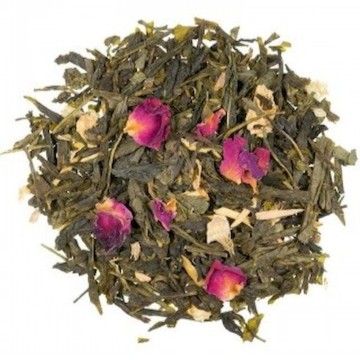
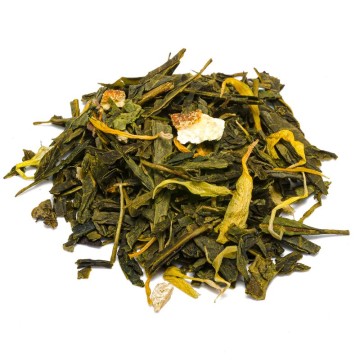
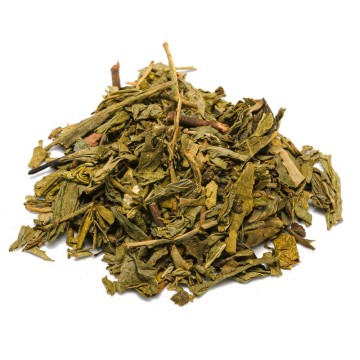
![green tea hemp mango [Natura d'Oriente]](https://www.naturadoriente.com/3381-home_default/green-tea-mango.jpg)

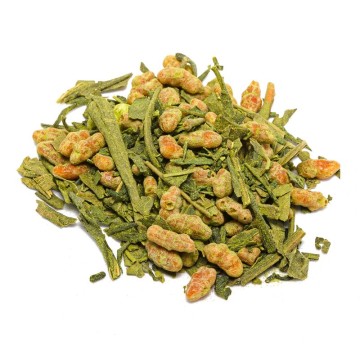

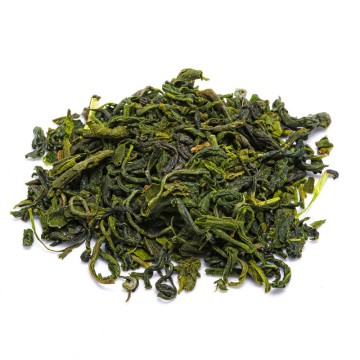



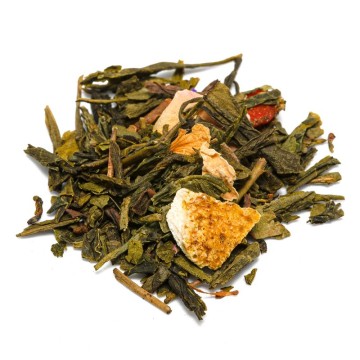

![Green tea Jasmine and jasmine [Natura d'Oriente]](https://www.naturadoriente.com/3373-home_default/green-tea-jasmine-and-jasmine-.jpg)
